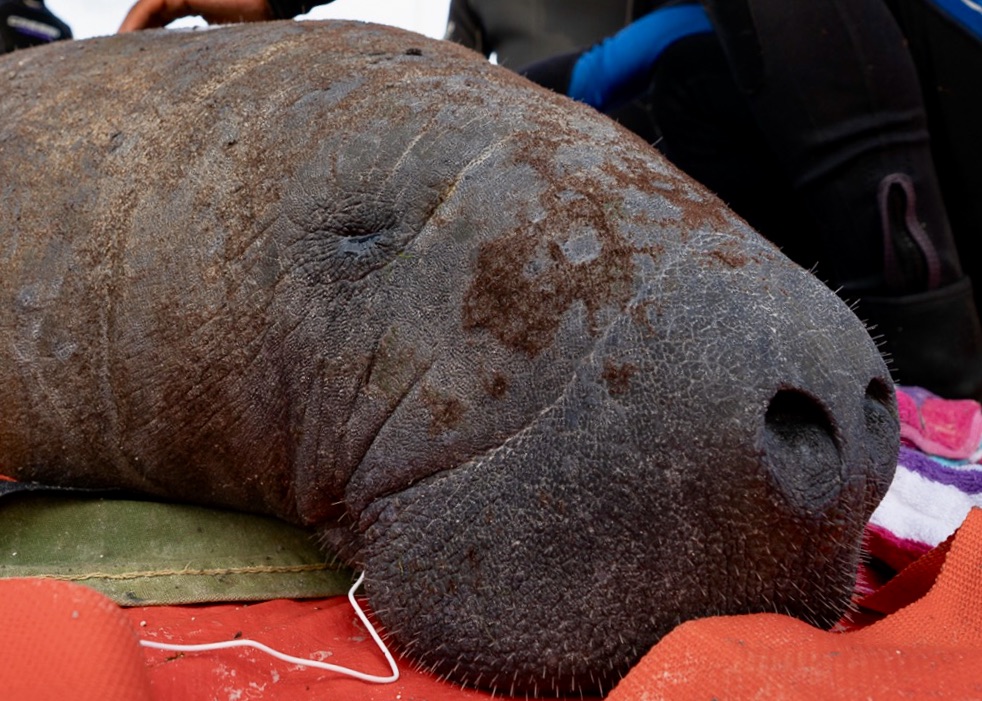
Juanita, Pepe and Lupita are West Indian manatees (Trichechus manatus) that have set a record. They are the very first manatees to be successfully rescued, rehabilitated, released, and tracked in the Dominican Republic.
Scientists with Clearwater Marine Aquarium Research Institute (CMARI) worked with partners from FUNDEMAR (Dominican Foundation for Marine Studies), The Ministry of Environment of the Dominican Republic, the National Aquarium of the Dominican Republic, and the German Embassy in the Dominican Republic, to tag the manatees and teach the local groups how to operate the tracking equipment.
Being able to track the manatees movements will help scientists gain a deeper understanding of how manatees use their habitat and to ensure Juanita, Pepe and Lupita are able to properly adapt to life in the wild.
About Juanita, Pepe & Lupita
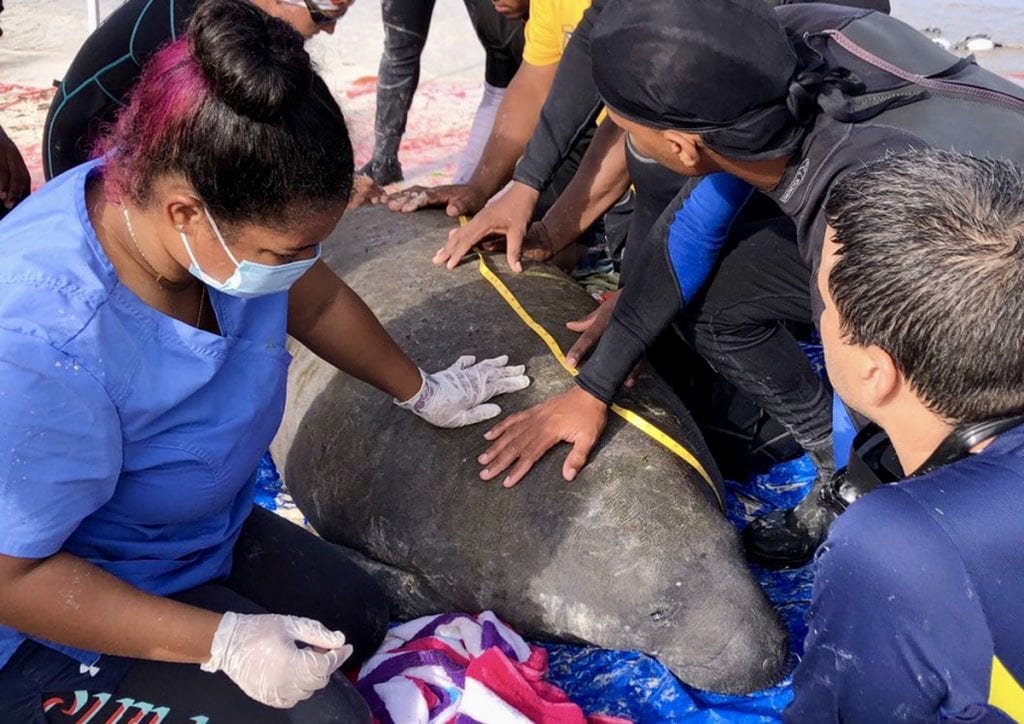
In August of 2012, Juanita suffered more than 10 stab wounds as a small calf when she was rescued in the Bayahíbe area, in the southeast coast of Hispaniola island. A beach security guard found her under a pier and called personnel from FUNDEMAR and the National Aquarium in the Dominican Republic. They were able to intervene and managed to save her life.
Just two months later, in October, a small orphaned manatee was reported in the vicinity of the Haina River marina, in the Dominican capital. This manatee was rescued by the National Aquarium. They named him Pepe.
Lupita was also rescued as a young orphaned manatee in 2018, this time in Luperón, in the north coast of the country by the National Aquarium.
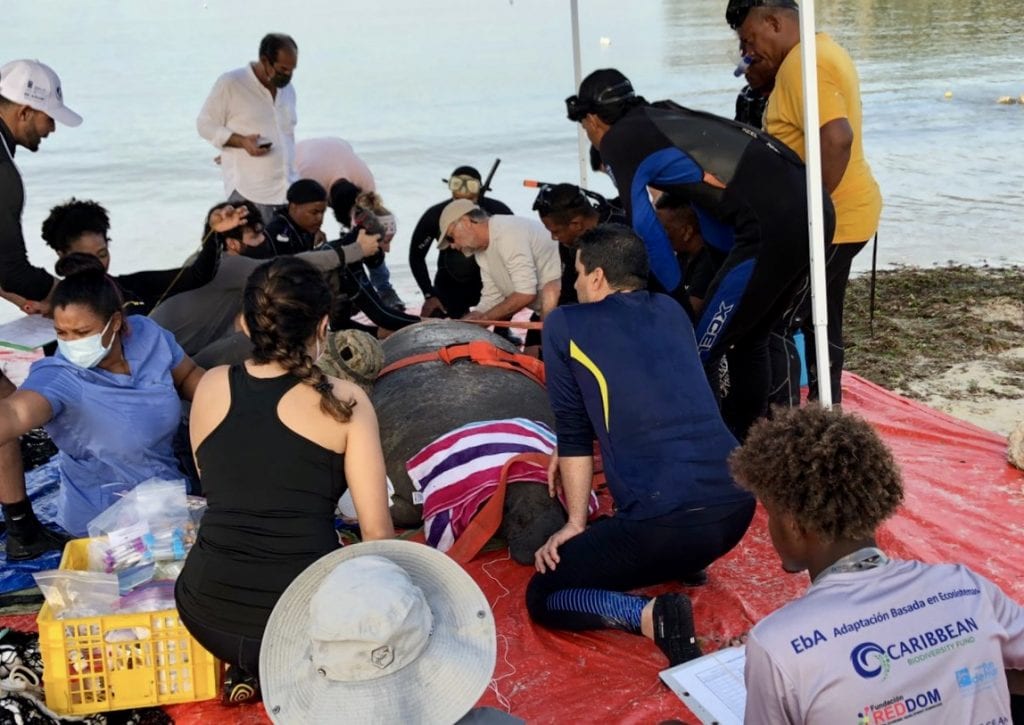
All three were being cared for at the Santo Domingo National Aquarium. The National Aquarium’s veterinarian in charge of manatees, Francisco de la Rosa, explains that keeping the animals had never been an option, although he considers that there has been resistance to their release due to survival risks.
Concerns Over Their Survival
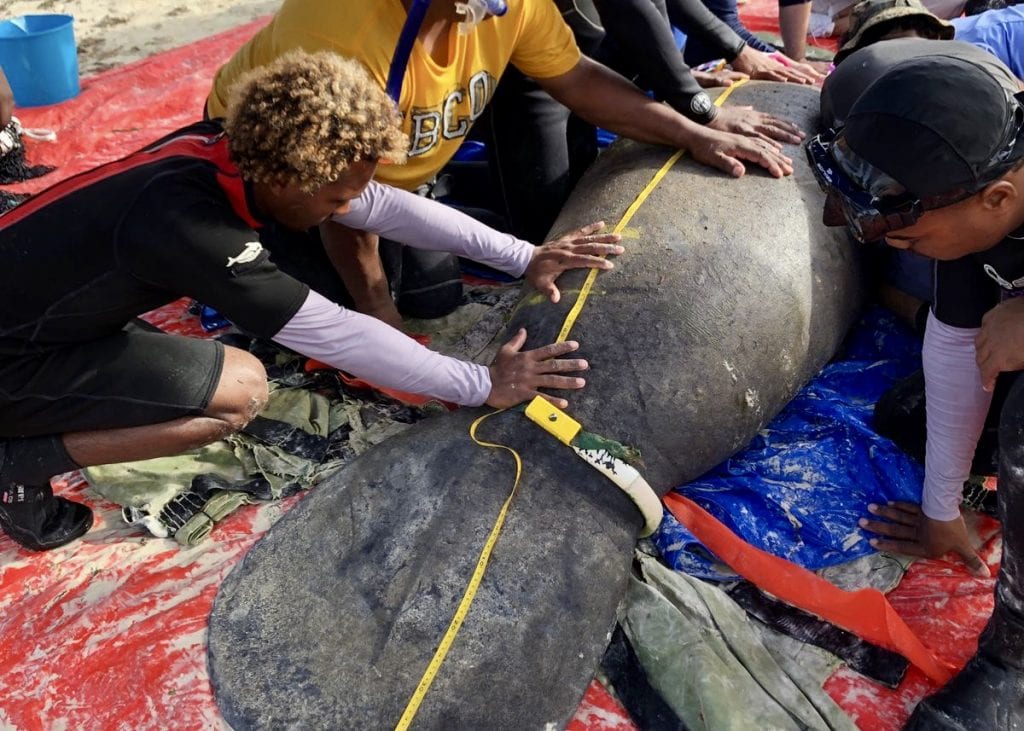
Since Juanita and Pepe were rescued at such a young age and had been under human care for over 8 years, there was concern that they would not be able to survive in the wild. Lupita, however, had experience in the wild and was under human care for only two years. Scientists are hopeful that Lupita will lead Juanita and Pepe as they adjust to life in the wild.
The trackers are the key to monitoring how the manatees are adapting and will alert scientists should there be any cause for concern or intervention.
Boat strikes are also of concern to the manatees. In February 2020, marine marker buoys were installed to protect manatee zones with speed limits. This was done in coordination with the Navy, the Ministry of the Environment, the Touristic Cluster and Hotel Asociation of La Romana along with other institutions.
Preparing Them For Release
Under instruction from the Ministry of the Environment and Natural Resources, a “soft release” in Bayahibe was planned where all three manatees have been in a natural pen for an adaption period of six months prior to their release. The pen site was selected by the team of the Ministry of Environment, FUNDEMAR, and the National Aquarium based on existing protocols and similar experiences in Puerto Rico.
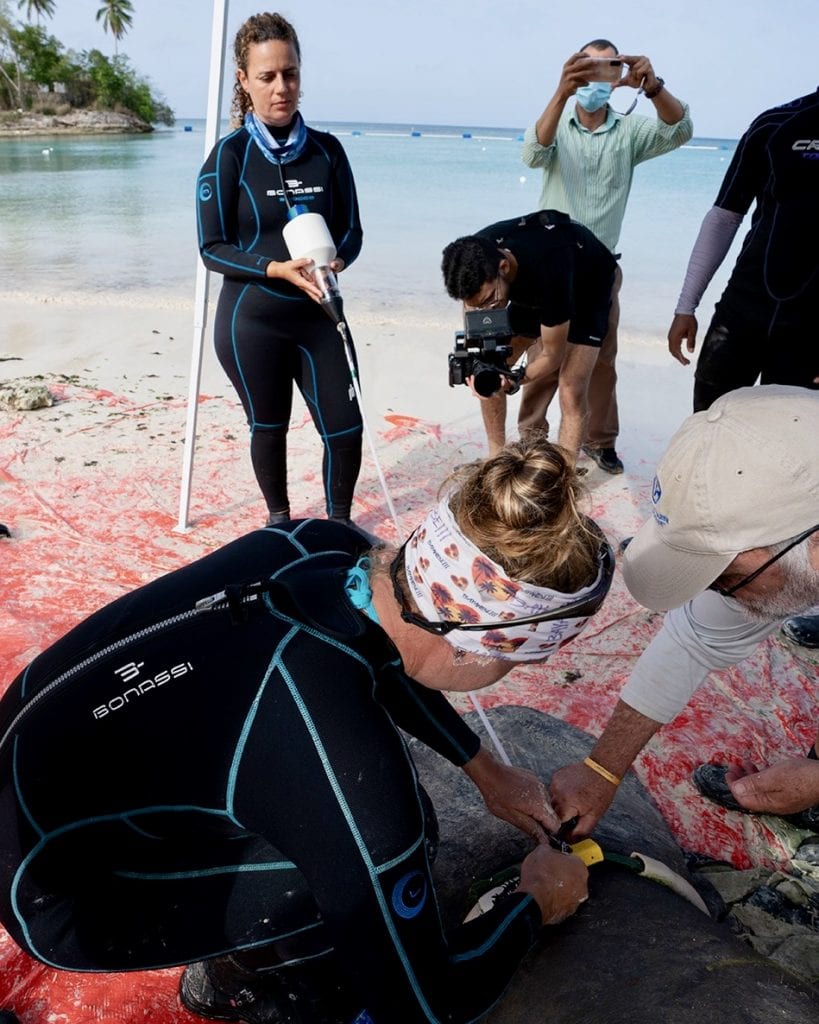
Dr. James “Buddy” Powell from CMARI joined the teams at FUNDEMAR, the National Aquarium, Ministry of Environment and German Embassy to prepare Juanita, Pepe, and Lupita for release by outfitting them with their tracking devices. Dr. Powell also trained the Dominican scientists on how to place the devices on the manatees and use the tracking software.
Scientists with CMARI will continue to serve in a consultant role, helping FUNDEMAR decipher when unusual movements aren’t of concern, or when an intervention is necessary for the manatees’ well-being.
Outreach events for local fisherman and families led by FUNDEMAR allowed the community an opportunity to become familiar with the tags used on the manatees and why they are being used. These events also encourage locals to report manatee sightings as well as those in distress so the proper organization can respond appropriately and document habitats manatees may be using in the area.
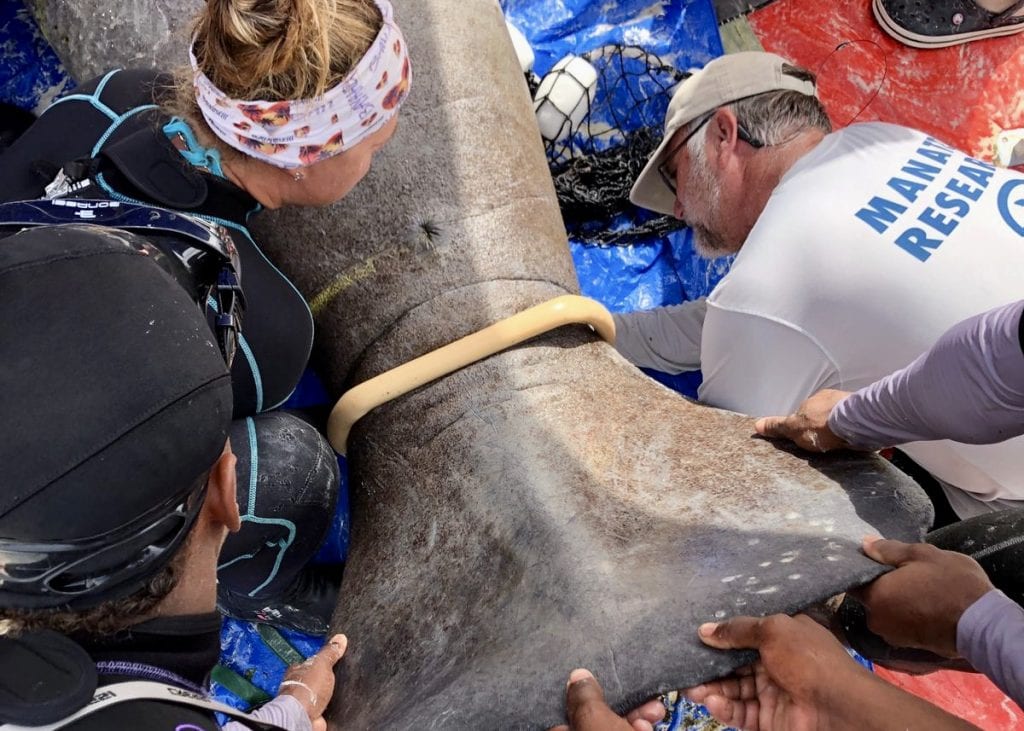
Their Return to the Wild
The net separating Juanita, Pepe and Lupita from the wild was successfully removed on June 27. As the first manatees to be successfully rescued, rehabilitated, and tracked in the Dominican Republic, representatives from the Dominican government including the President and Vice Minister led the event commemorating the manatees’ release.
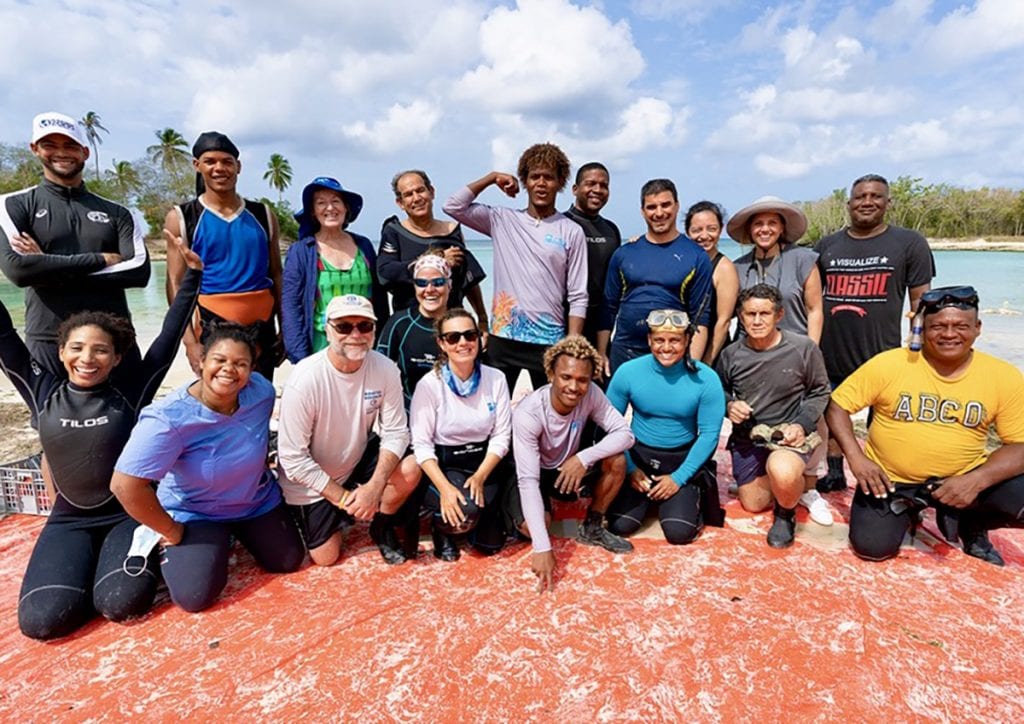
Follow our map tracking updates to see where they go
Please support us today with your donation so we can continue conserving the world’s aquatic resources through direct action, research, and education throughout the world.
Photos courtesy of Ariel del Mar.